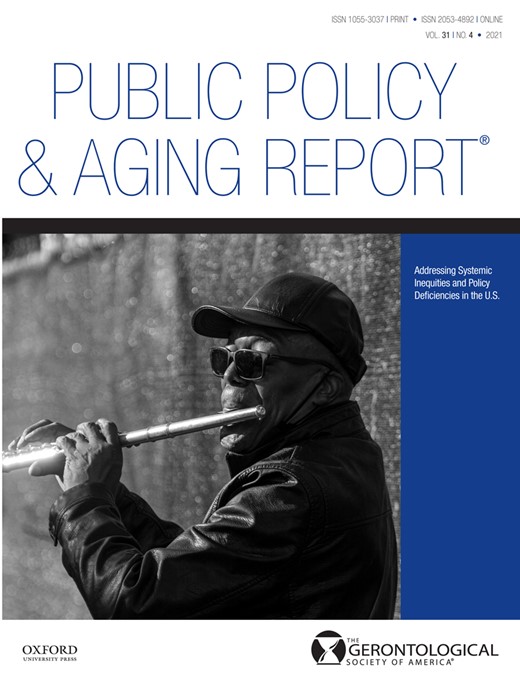-
Views
-
Cite
Cite
Bob Harootyan, Hidden Dimensions of Ageism in Employment and the Weakening of the Age Discrimination in Employment Act, Public Policy & Aging Report, Volume 31, Issue 4, 2021, Pages 129–132, https://doi.org/10.1093/ppar/prab020
Close - Share Icon Share
Extract
Since the mid-1990s, the labor force participation rates of persons aged 55+ have steadily increased, especially those ages 65–74 (28% in 2019 vs. 18% in 1999). With fewer young-adult workers, persons aged 55+ comprised 24.8% of the labor force in 2019: double their proportion in 1999. This increase was driven by the large Baby Boom population, who are now ages 57–75. This older workforce also is more diverse by race, ethnicity, and sex. These trends will continue. Surveys indicate that a majority of older Americans intend to work beyond age 65, citing financial necessity, better security in retirement, good health, and a desire to remain active.
Hidden Dimensions of Age Discrimination in Employment
Despite these trends, older workers continue to face ageist attitudes and to experience age discrimination in the workforce, which is often hidden, subtle, difficult to detect, and difficult to ameliorate. Several studies provide evidence of ageism in employment. Lahey (2005) tested age bias in entry-level job opportunities for women ages 35–62. Pairs of résumés (n = 3,996) that differed only by applicant’s age (indicated by high school graduation year) were sent to employers. The results showed that the likelihood of being called for an interview notably declined with age. Younger applicants (ages 35–49) were more than 40% more likely to be called back than older applicants (ages 50–62). The research concluded that age-based stereotypes clearly were the reasons for employers’ decisions.





